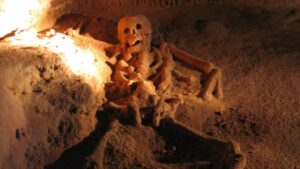“Unbelievable Twists of Fate: Discover the 14 Most Ironic Moments in History That Will Leave You Speechless!”
Ironically, Spain’s advanced fleet was brought down not by enemy fire but by the very waters they sought to control. It’s a reminder that human plans often fall short against the unpredictable forces of nature.
4. The Dutch Tulip Craze


In the 1630s, tulip mania swept through the Netherlands, with bulbs selling for outrageous sums. At the height of the craze, some people were trading land and homes for a single bulb, only for the bubble to burst suddenly, leaving many bankrupt.
The irony? People were trading physical assets for something as fleeting as a flower. Tulip mania has since become the textbook example of economic bubbles, illustrating how human greed can inflate value to absurd levels.
5. Thomas Jefferson’s Death on the Fourth of July


Thomas Jefferson, the author of the Declaration of Independence, died on July 4, 1826, exactly 50 years after the nation’s founding. To add to the irony, his fellow Founding Father, John Adams, died on the same day, just hours apart.
Their deaths on the Fourth of July added a legendary twist to the country’s Independence Day. Jefferson and Adams spent years as political rivals, yet they exited life on the same stage, sharing one final, ironic connection.
6. The Creation of Coca-Cola as a Cure for Addiction


In 1886, Dr. John Stith Pemberton created Coca-Cola as a non-addictive alternative to morphine. Ironically, the drink originally contained coca leaf extract, a source of cocaine, which at the time was believed to be harmless.













